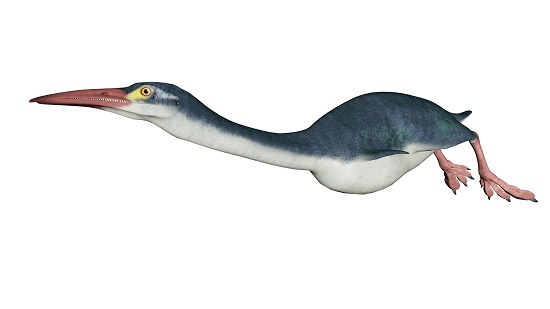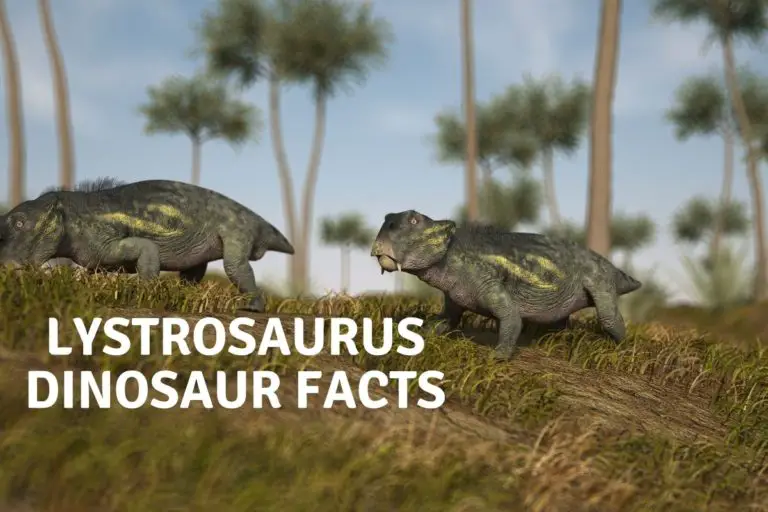Could Dinosaurs Swim?
It seems that ever since a brief cameo in the Lost World, a longer aquatic adventure in Jurassic Park 3 and then a whole swimming scene in Jurassic World Dominion that dinosaurs are, at least in Hollywood, becoming much more comfortable in the water. Is this true though, could dinosaurs swim?
Many dinosaurs likely could swim. Fossils, dinosaur tracks and body structure provide evidence that to some degree Theropods, Hadrosaurs, and possibly even large Sauropods could swim when needed. There were also dinosaurs that had evolved to a fully or semi aquatic life like Hesperornis and Halszkaraptor.
Dinosaurs are usually, and accurately it has to be said, as land giants, thumping their heavy feet on the ground, butting heads or reaching long necks into trees. However, in no small part thanks to the movies we mentioned above, the question about dinosaurs swimming abilities is coming up more and more.
We take a longer look at the simple answer in bold above and look at both could dinosaurs swim and why they may have done so if needed.
Lets Dive ( ha!) in.

Were there Some Swimming Dinosaurs.
When you think about animals built for swimming, what comes to mind? Fish, ducks, otters, or maybe seals? They have specific body parts that make them great swimmers, like fins, flippers, or webbed feet.
Now, imagine a dinosaur with similar features. Hard to believe? Well, it’s not as far-fetched as it might seem. in fact we have a full article on swimming dinosaurs with more detail here on the site linked here and below.
Fossils from certain dinosaur species like the Spinosaurus and Baryonyx suggest they could have had body features suitable for a swim. These dinosaurs had long, slender bodies, strong limbs, and possibly even webbed feet! – still heavily debated though!
Plus, the Spinosaurus had a huge sail on its back and a crocodile-like tail that might have helped it swim, much like the way animals today use their tails to move through water.
While there is still discussion around the Spinosaurus being semi aquatic ( almost as much as whether it was bigger or smaller than a T-Rex) there were certainly other dinosaurs that were great at swimming.
In fact one in particular, and we mentioned other below, was the Hesperornis which looked – basically – like a 6 ft tall toothy heron but was never the less, according to Wikipedia and David Attenborough in Prehistoric Planet 2 – Oceans Episode a dinosaur!
So while there were dinosaurs that were evolved for a life on land and water, this can not be said about all groups, families, species or even individual dinosaurs.
Could Dinosaurs Swim?
So while it is likely that most, if not all, dinosaurs had some swimming ability this ability would have been as wide and diverse as the species of dinosaurs.
Some would have muddled through some would have been fair decent and as we touched on above some would have even evolved to live in both the water and land.
We have a table with some of the possibly swimming ability of some dinosaur groups below.
Table 1: Could Different Dinosaurs Swim
| Dinosaur Type | Examples | Likely Swimming Abilities |
|---|---|---|
| Theropods | Tyrannosaurus Rex, Velociraptor, Pyroraptor, Spinosaurus | Varying swimming abilities. Some, like Spinosaurus, may have been semi-aquatic, with adaptations for swimming and hunting in water. |
| Ceratopsians | Triceratops, Styracosaurus, Pentaceratops, | Likely had limited swimming ability for crossing water bodies when necessary, using a simple dog-paddle style of swimming. |
| Hadrosaurs | Edmontosaurus, Parasaurolophus, Iguanodon, | Evidence suggests they were competent swimmers, using strong legs and broad, flat tails for propulsion, and possibly having webbed feet. |
| Sauropods | Diplodocus, Apatosaurus, Argentinosaurus, Brachiosaurus | Likely had some swimming ability. Their long tails could have helped in steering, and their large bodies might have provided some buoyancy. |
| Ankylosaurs | Ankylosaurus, Euoplocephalus | Despite their heavy armor, they may have been able to float or paddle in water, similar to modern armadillos. |
| Stegosaurs | Stegosaurus, Kentrosaurus | May have had limited swimming abilities. Their dorsal plates and spikes could have provided stability in water. |
| Other notable species | Halszkaraptor, Baryonyx, Hesperornis | These dinosaurs likely had significant swimming capabilities, with Halszkaraptor showing features of both terrestrial and aquatic predators, and Baryonyx likely hunting in water. |
In the sections below we look at the main and most popular dinosaur groups to examine if these dinosaurs could swim and why they might choose or be forced to do so.

Could Theropods Swim?
Theropods were mostly bipedal (walked on two legs) and often carnivorous dinosaurs. This group incorporates a range of species of all sizes from the agile Velociraptor and Pyroraptor ( more on them later) to the formidable Tyrannosaurus Rex and Giganotosaurus and even the huge herbivore Therizinosaurus.
One important and older example of Theropods’ swimming capacity is the Spinosaurus. Newer research indicates that this dinosaur, arguably (very) the largest carnivorous one known to date, may have exhibited semi-aquatic behavior.
Fossil findings present distinctive adaptations like a crocodile-like snout for capturing fish, a wide strong tail, crocodile like teeth suitable for grabbing and holding slippery prey like fish, and a sail-like structure, whose uses are still under debate, but may include aiding in swimming.
Although these adaptations do not directly prove that Spinosaurus was an adept swimmer, they certainly suggest a high degree of swimming capability.
Even in other Theropods, indications of occasional swimming, such as claw marks left in river beds or deltas, suggest that Theropods may have waded into water bodies, at least partially.
in fact although not evidence Prehistoric Planet 2s first episode featured a father T-Rex swimming across to an offshore island with his young with, for his size, surprising ability. However it is backed up by research from 2013 as we discuss here.
In other media, Jurassic World Dominion in particular, has perhaps shown this a little to enthusiastically with its depiction of Pyroraptor swimming with the agility of a seal! We have an article on this here on the site.
Of all the dinosaur types it is likely that theropods would have been one of the most comfortable in the water, it appears with the exception of a few bird like species and Spinosaurs they still preferred to be on land given a choice though!

Could Ceratopsians Swim?
if any dinosaur looked unlikely to be able to swim it is the Ceratopsians. They are known for their horned faces and large, heavy bony frills, and with their boxy bulky bodies do not look like they are going to be great swimmers.
However, as we discuss in our can triceratops swim article we have plenty of top heavy, big bulky animals alive today that do perfectly well in the water.
Elephants for example are pretty good in the water, as are Hippos of course, and even Rhinos, Asian Rhinos that is – Africans rhinos are another matter -do really well in the water.
Even so, species like Triceratops and Styracosaurus, with a quadrupedal (4 legged) stance and an incredibly heavy head due to their frill and horns, seems out of their depth (ha!) to regularly head in to water for a swim and a dip.
However, in situations of necessity such as crossing water bodies for migrations (like todays Mara River crossings) or escaping predators,
These dinosaurs might have been capable of some form of swimming or floating or bouncing off the bottom to leave scrap marks for paleontologists to study later on.
A simple dog-paddle style swimming, similar to modern heavy quadrupeds, could have been a likely swimming method.
Given that most large terrestrial animals today have some ability to swim, it seems reasonable to speculate that Ceratopsians, despite being heavily built and primarily terrestrial, might have possessed the ability to swim when required but would not have been particularly graceful or speedy!

Could Hadrosaurs Swim?
Hadrosaurs, also known as duck-billed dinosaurs, were large, herbivorous creatures typically found in the late Cretaceous period.
Their semi-aquatic lifestyle and living close to water, swamps and lakes has been suggested by various pieces of fossil evidence, leading to a lively debate on their swimming capabilities.
The anatomy of Hadrosaurs, characterized by strong hind limbs and a tail, combined with tracks and trace fossils, suggest that they might have been competent swimmers.
These dinosaurs had powerful, sturdy legs and broad, flat tails that could have been used for propulsion in water. it was at one stage thought that some Hadrosaurs had webbed feet, potentially increasing their swimming ability, but this was later disproved and in fact they had feet like camels.
One popular hadrosaur, the Parasaurolophus with its large crest was also at one stage thought to possibly use the crest as a type of snorkel, which while incredibly cool was also (unfortunately!) disproved.
however paleontological findings often reveal Hadrosaur fossils in both marine and freshwater environments, suggesting that they were comfortable in and around water.
While this doesn’t necessarily mean they were aquatic, it does suggest they were likely good swimmers, able to navigate across bodies of water when necessary.

Could Sauropods Swim
Sauropods, including well-known species like brachiosaurus, Diplodocus and Apatosaurus, are now usually seen as land-dwelling dinosaurs, who might dip into water now and again as relief from the heat of the day or bugs.
While no one ( we could find) is suggesting a sauropod would have been a good swimmer, despite their immense size, sauropods possessed certain features that may have been helpful when having to cross rivers or lakes.
Their long, muscular tails could have been used as a rudder, helping to steer and stabilize their bodies in water. Additionally, their barrel-shaped bodies, with a low center of gravity, could potentially have offered some buoyancy.
Fossil footprints of Sauropods suggest that they might have been able to swim. Some of these footprints, often called “swimming traces,” show only the marks of the front limbs or are interrupted, implying the dinosaur was partially or fully buoyant although more recent studies have challenged this.
While it is unlikely these enormous dinosaurs were agile swimmers, it may well be they had some capacity for swimming or at least buoyant paddling.
However like the Ankylosaurus below there needs to be further research to confidently state sauropods were dinosaur swimmers.

Could Ankylosaurs and Stegosaurs Swim?
Ankylosaurs and Stegosaurs, popularly known for their heavily armored bodies and distinctive dorsal plates respectively, may not immediately appear as potential swimmers due to their strong and heavy bodies
The armored Ankylosaurs, despite their heavy appearance, could potentially float or swim, much like modern-day armadillos. There was even a tiny fish eating ankylosaur! However, these are the dinosaurs that prehaps would have been at most risk in deep water.
Their bony armor was often made up of osteoderms, which if porous could aid in buoyancy, enabling these dinosaurs to at least float or paddle in water.
However a lot of Ankylosaurus fossils have been found belly up, which could indicate as they decompose gases cause them to tip over, (called, not very nicely, Bloat and float) or that they are top heavy.
In water their armor might actually weigh them down and unless they learn how to do back stroke they would find them selves in a lot of trouble!
Stegosaurs, with their distinctive rows of dorsal plates and spikes, may have also been capable of some form of swimming. in fact there has been suggestive fossil evidence of a species of stegosaur showing some level of swimming ability.
We also discuss this in our can stegosaurus swim article.
Although these plates and spikes might seem disadvantageous for swimming, they could have been useful for balance and stability in water.
It’s important to note that the ability to swim doesn’t suggest these dinosaurs were semi-aquatic or aquatic.
Rather, it suggests they could navigate water bodies when required, potentially opening up new habitats or escape routes from predators and not gambol around like a pod of dolphins!

Other Notable Swimming dinosaurs
While the well-known dinosaur families dominate the discussion, several lesser-known species also show potential swimming abilities.
For example, Halszkaraptor, a bizarre dinosaur with features of both terrestrial and aquatic predators, may have been a proficient swimmer. Its slender, elongated neck, short and sturdy flipper-like forelimbs, and likely webbed feet suggest adaptations for an aquatic lifestyle.
Another interesting species is the Baryonyx, a spinosaurid Theropod. Its snout shape and tooth structure indicate a diet of fish, suggesting that it likely hunted in water, which would require some swimming ability or at the very least good wading ability.
These examples, like the Hesperornis we mentioned right at the top of the article, highlight the spectrum of swimming capabilities among dinosaurs, from those that may have ventured into water bodies occasionally to those that likely relied on aquatic environments for their survival.
Understanding If Dinosaurs Swim
Understanding dinosaur swimming capabilities hinges on the interpretation of various forms of fossil evidence.
From direct indicators like Characichnos “swimming traces” (footprints left in sediment by a swimming dinosaur) to indirect ones such as bone adaptations and sedimentary environments
While there is not evidence for every type of dinosaur and its respective swimming abilities there have been some impressive discoveries.
For instance, trace fossils, like footprints and tracks, can provide direct evidence of dinosaurs interacting with aquatic environments.
One remarkable case study comes from the “Lark Quarry” in Australia, where it appears that a herd of small bipedal dinosaurs, thought to be Coelurosaurs, were crossing a river or stream.
Their footprints show varying degrees of immersion, suggesting they were possibly swimming at times.
There are other such trackways at La Virgen del Campo track site in spain, which show 12 tracks over 15 metres of a likely theropod swimming dinosaurs.
Even with this evidence, much remains speculative and open to interpretation.
Conclusion
Although mostly land based, many dinosaur species likely possessed some degree of swimming capability, just like larger animals today.
There is not evidence to state categorically that there is any dinosaur species could not survive or even swim if in deeper water, we can say their abilities at swimming would have been as wide ranging as there are number of species of dinosaur.
Could all dinosaurs swim? Possibly, could they swim well, for most probably not!
So if you found yourself faced between a river and a dinosaur, you should probably take your chances in the river, well apart from the prehistoric crocodiles of course!
References
- https://www.waterworksswim.com/swim-library/detail/2014-11-06-tyrannosaurus-rex-was-aquatic-post-423
- https://www.paulsprehistoricpark.com/?p=6608
- https://science.howstuffworks.com/environmental/earth/geology/dinosaur-swim.htm
- https://blog.everythingdinosaur.com/blog/_archives/2022/12/13/spinosaurus-not-an-aquatic-dinosaur
- https://www.researchgate.net/publication/277938219_Could_stegosaurs_swim_
- https://blogs.scientificamerican.com/laelaps/the-amazing-inflatable-ankylosaur
- https://www.smithsonianmag.com/science-nature/did-dinosaurs-swim-
- https://www.smithsonianmag.com/science-nature/koreaceratopsa-swimming-ceratopsian-
Hi, I am Roy Ford a General Studies and English Teacher who has taught all over the world. What started as a fossil collection became a great way to teach, motivate and inspire students of all ages and all over the world about dinosaurs and from that and children’s love of dinosaurs came the site dinosaur facts for kids, a resource for all ages.






